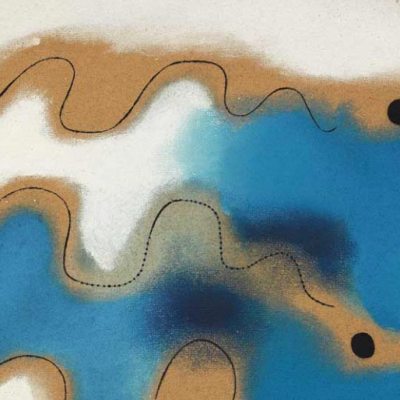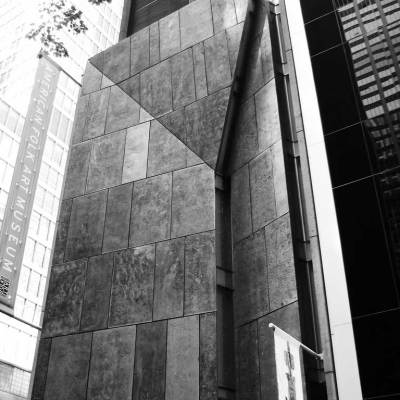Amélie Simier, director of the Musée Bourdelle in Paris, tells us more about Antoine Bourdelle and the history of the studio museum
Can you tell us a bit about the museum’s history?
The Musée Bourdelle is housed in the spaces used by sculptor Antoine Bourdelle (1861–1929) for living and working from 1885 until his death. Bourdelle really hoped to see a museum-workshop built in his honour; it was to be open to the young artists he taught. This project was not completed during his lifetime, so his family continued his wish.
In the 1930s, the artist’s workshops were opened to visitors by his widow Cléopâtre. In 1949, with her daughter Rhodia, she donated the workshops and a body of work (sculptures, drawings, paintings, archives, works from the Bourdelle collection) to the city of Paris, on the condition that a Bourdelle museum be created, and that they be the curators until their death. When Rhodia Dufet-Bourdelle died in 2002 all of the collection – carefully preserved and expanded by the Bourdelle family – was left to the city of Paris. It is the city’s responsibility to make the artist, his work and the museum better known.
What makes this museum unique?
The museum is a haven of peace between workshops and gardens. It is a stone’s throw from Montparnasse and 10 minutes metro ride from the Champs-Élysées but time seems to stand still. It offers the visitor a simple and accessible approach to the art, through the eyes of one man, Antoine Bourdelle, in a succession of spaces with a captivating atmosphere.
There is a secret and intimate workshop that it seems the artist has just left; a large hall built like a basilica in 1961 to house the monumental casts, amongst which are some beautiful reliefs from the Théâtre des Champs-Élysées and the famous Héraklès; and a contemporary extension in concrete, cement and glass by the architect Christian de Porzamparc, designed to showcase the bronzes. All of this surrounds gardens populated by sculptures right in the heart of Paris.
How does it relate to the local area?
The Musée Bourdelle is in the heart of Montparnasse, one of Paris’s most famous bohemian quarters. It is one of the last examples of the artists’ workshops, built at the end of the 19th century to put up a growing artist population in an area that was less populated than the centre of the capital and where the land and rents were less costly.
Today the rue Antoine Bourdelle is in the centre of Paris but the area still has a villagey feel to it. You can’t work in the museum garden without getting into conversations with passers-by. The museum works with schools and community centres in the local area, we are happy to welcome students who come to draw, adults and children who come to make models. The museum still has something of the life and soul of the workshop.
How did you come to work here?
After studying history of art and ethnology at the École du Louvre, then at the Institut National du Patrimoine (the institute which trains French curators), I became curator of sculptures at the Petit Palais museum, a largely 19th-century collection including Jean-Baptiste Carpeaux, Jules Dalou, Jean-Joseph Carriès… and some Bourdelle. I had known and loved the Musée Bourdelle – a miraculously preserved treasure – for a long time. I was lucky enough to be recruited in 2011 to manage it. I’m the second director who is not from the Bourdelle family, so I feel a bit like I’m becoming part of a family history.
What are the greatest challenges of running a small museum?
The first challenge is to make Bourdelle and his museum better known. There are 70 permanent staff members at the museum, most of them welcome visitors and watch over the rooms – they are the first to communicate their love of the place to visitors. They are our best publicity!
For Bourdelle’s work to be better known, it also has to be studied, exhibited and circulated, this is the first task for the museum’s conservation team.
The second challenge is to preserve the soul of the place, as it was built over time, all the while improving conditions for visitors and employees. We are vigilant about any events in this fragile place, where the old buildings were not built to last, and we are taking small steps to reinforce their strong identity.
What is your personal highlight from the collection?
Amongst the works I particularly like the Head of Apollo. This iconic mature work by Bourdelle reveals, better than any other, the settling process that took place in the artist’s workshop. The Apollo is based on a head modelled in clay around 1898, then left forgotten in the corner of the workshop. Some years later Bourdelle rediscovered it, dried up and damaged over time, resembling an archaeological object.
In order to preserve it he took a mould from which he took a fragmentary mask. Its surface deliberately retains traces of the mould and wrenching of the original earth. From this, several works were created, one of which is the Head of Apollo, mounted on a plinth with angular lines, cast by Georges Rudier, and covered in a golden patina… This sculpture, one of the highlights of our collections, is the quintessence of the workshop’s magic, a place where everything is constantly taking shape and being transformed.
How well do you feel you know the collection? Does it continue to surprise you?
Every morning I cross the former workshops bathed in light to get to my office: the play of light on the works is always changing, which means I am constantly rediscovering them.
Plus, the collection has never been moved, and the place still has some surprises for us. The current exhibition ‘Bourdelle intime’ is based on photographs that were discovered torn but carefully annotated in a secret cupboard…
How has the museum developed during your tenure?
The museum is gradually transforming to get closer to its original identity, that of former workshops. In three years we have rehung part of the permanent collection, launched a new website, inaugurated a room devoted to the materials and techniques of sculpture, replanted the gardens and installed deck chairs.
We have exhibited and published masterpieces from the 6000 Bourdelle drawings, and published a new Bourdelle biography illustrated with previously unseen photographs chosen from the 15,000 pictures in the archive as well as correspondence between Rodin and Bourdelle. Not forgetting the 92,000 visitors who came in 2011 for the exhibition devoted to Madame Grès, an extraordinary fashion designer who wanted to be a sculptor.
Visitors have a good time here, the visitors’ book is testament to that, as is the rise in numbers visiting the permanent collections: 16,000 in 2010 to 50,000 in 2012 and 2013. But there are still so many people who don’t know us!
And what does the future hold for the Musée Bourdelle?
In 2014 we’re having some work done to make the museum and gardens more accessible to visitors and we’re rethinking the design of a room that is part of the visit: it was called ‘Bourdelle’s apartment’ and was really used as a painting workshop and a place to show his collections and receive clients.
In spring 2015, after Cambridge, we’re hosting ‘Silent Partners’, a particularly exciting innovative exhibition designed by Jane Munro and the Fitzwilliam Museum around the workshop mannequin, a fascinating tool which was hidden by artists for a long time. Mannequins and the representation of mannequins will invade the museum and our visitors will discover the many facets of this phenomena, of which Paris was once the capital!
The Musée Bourdelle is in Montparnasse, Paris



